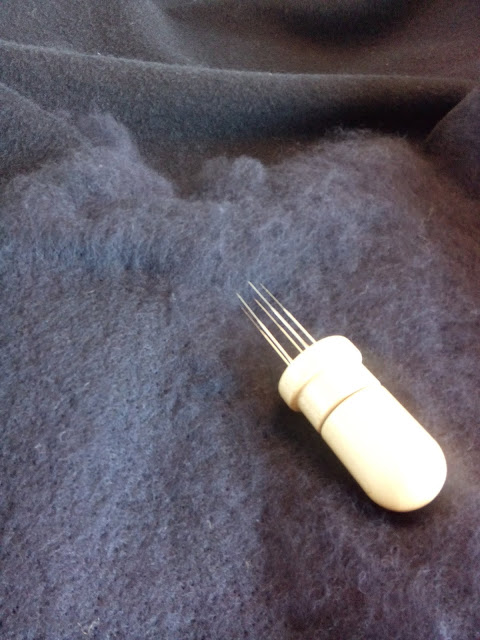16: An Iconic Object Since 1695
Especially in the UK most people know the Brown Betty teapot. Maybe not by its name, but certainly by its look.
The Brown Betty teapot is an item that goes a long way; everyone's grandmother could have one, every neighbour and even the local tearoom. In the beginning it might have been special to own one, for it re-established local industry and local jobs. Later it became the 'people's pot', over the years cheaper and cheaper and as such lost much of it's value. Now with the reboost it will hopefully be recognised again as a valuable object.
The teapot comes from the UK, is made with local clay and also locally made by craftsmen.. This has been the case for centuries, although imitations took the item away from any local connection. And because of that the issue of who made it became alien, as happened with most of the items and objects found in households.The glaze even has a name, Rockingham Brown, but my inquiries about the source of the glaze were to no avail so far.
I reckon the career of the teapot is rather simple. It's bought and used for making tea.
The age in the life of a teapot differs from that of, let's say, a sofa or a bicycle. It belongs to the somewhat smaller objects in a household. Especially when it's cheap and comes from far. When people know it's locally made they can relate to the object much more and will keep on using it even when it's 'old'.
Originally dating back to 1695, it has been imitated ever since as well. None of the imitations have the quality of the original, and cheap imitations caused the design being neglected. But Cauldon Ceramics recently gave the design a boost, by working together with ceramist Ian McIntyre. He researched the history and the design of the teapot, and somehow restored the original from its unmapped changes that have been made over the centuries. It all began in Stoke-On-Trent, the historical British centre of the ceramic industry. Two Dutch brothers, John Philip and David Elers, arrived in the area to work on a replacement that could compete with Chinese teapots that were imported at the time. Made with local Staffordshire red clay, it was part of the industrialisation of the area. Handed over from company to company and from country to country over the centuries, the Brown Betty as such has become a cheap item. As McIntyre told Crafts magazine in a recent interview: " It's a problem with the way the Brown Betty has been marketed and produced over the last years. Essentially, since production has moved overseas I suppose skill sets, knowledge and awareness of what the object is and how it is produced has been changed." Cauldon, the ceramic company that has the original license, wants to re-establish the teapot as a handmade, British product, made with the original Staffordshire red clay. It's also an attempt to get away from the bottom line, on which the costs of production were brought back to the minimum, and as such reduced the quality of the product.
The limited edition that McIntyre produced for the Ceramics Biennale last autumn brings back the ultimate non-dripping spout, the lid which doesn't fall off when pouring and the invertibility of the lid so to save space in the factory and in packaging.
The production of the teapot being brought back to Stoke-On-Trent also re-establishes skills and knowledge. An admirable example of reconnecting with an object that's being used daily by thousands. For the SDG12-goal it is interesting to look at the cultural biography of this object, according to Kopitoff:
*what, sociologically, are the biographical possibilities inherent in it’s status and in the period in time and culture and how are these possibilities realized?
The Brown Betty teapot is an item that goes a long way; everyone's grandmother could have one, every neighbour and even the local tearoom. In the beginning it might have been special to own one, for it re-established local industry and local jobs. Later it became the 'people's pot', over the years cheaper and cheaper and as such lost much of it's value. Now with the reboost it will hopefully be recognised again as a valuable object.
*where does the thing come from and who made it?
The teapot comes from the UK, is made with local clay and also locally made by craftsmen.. This has been the case for centuries, although imitations took the item away from any local connection. And because of that the issue of who made it became alien, as happened with most of the items and objects found in households.The glaze even has a name, Rockingham Brown, but my inquiries about the source of the glaze were to no avail so far.
*what has been its career so far, and what do people consider to be an ideal career for such things?
I reckon the career of the teapot is rather simple. It's bought and used for making tea.
*what are the recognized ‘ages’ in the thing’s life, and what are the cultural markers for them?
The age in the life of a teapot differs from that of, let's say, a sofa or a bicycle. It belongs to the somewhat smaller objects in a household. Especially when it's cheap and comes from far. When people know it's locally made they can relate to the object much more and will keep on using it even when it's 'old'.
*how does the thing’s use change with it’s age and what happens to it when it reaches the end of it’s usefulness?
The use of the thing presumably doesn't change much. It's used for making tea for years and years and years. Unless it's broken it might end up in a charity shop or handed over to the next generation? It will be an interesting issue for interviews with owners.
Concluding so far I would say that this teapot is approved by SDG12, and ready for the 21st century. Just the glaze.....
Concluding so far I would say that this teapot is approved by SDG12, and ready for the 21st century. Just the glaze.....




Reacties
Een reactie posten